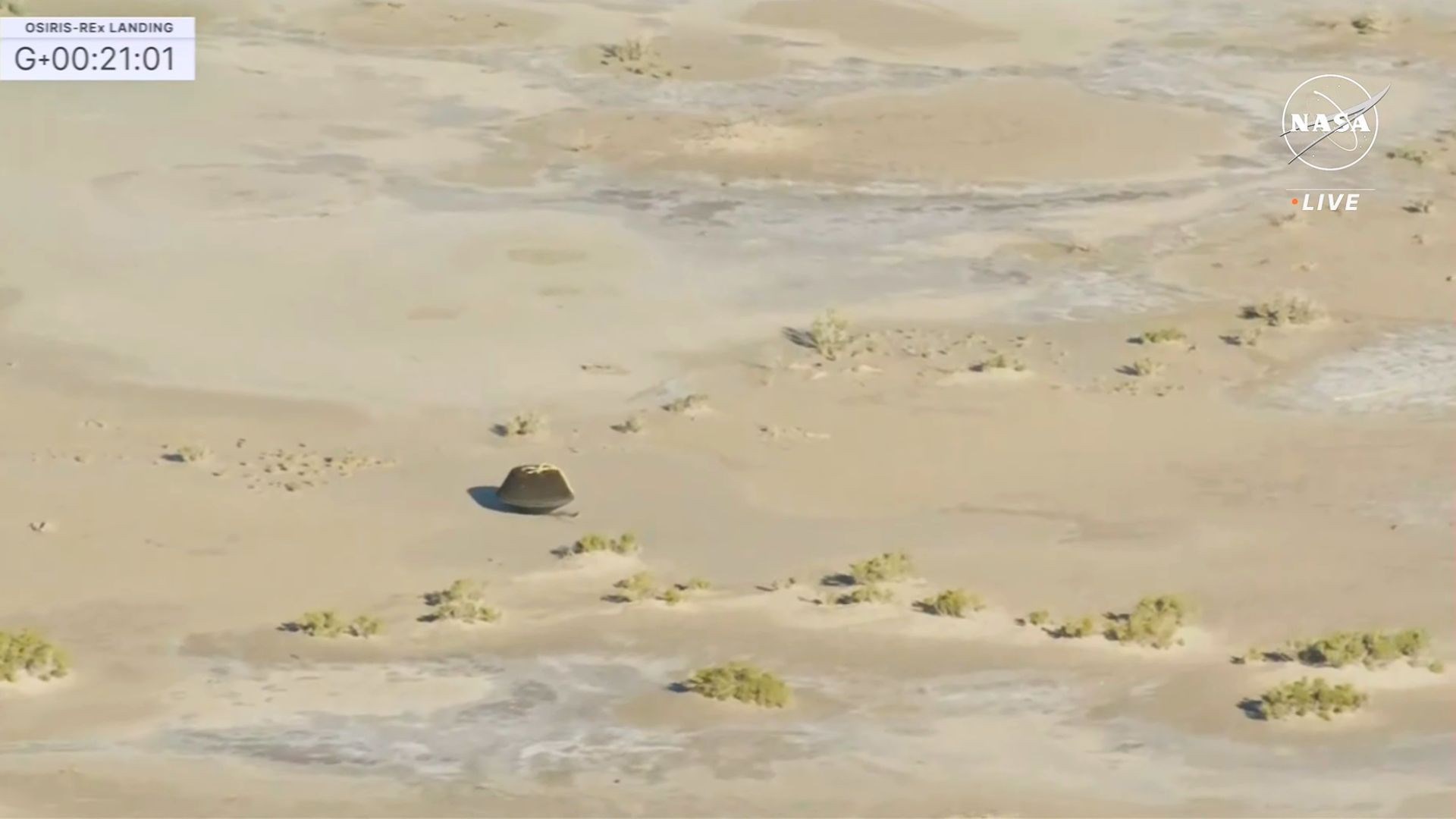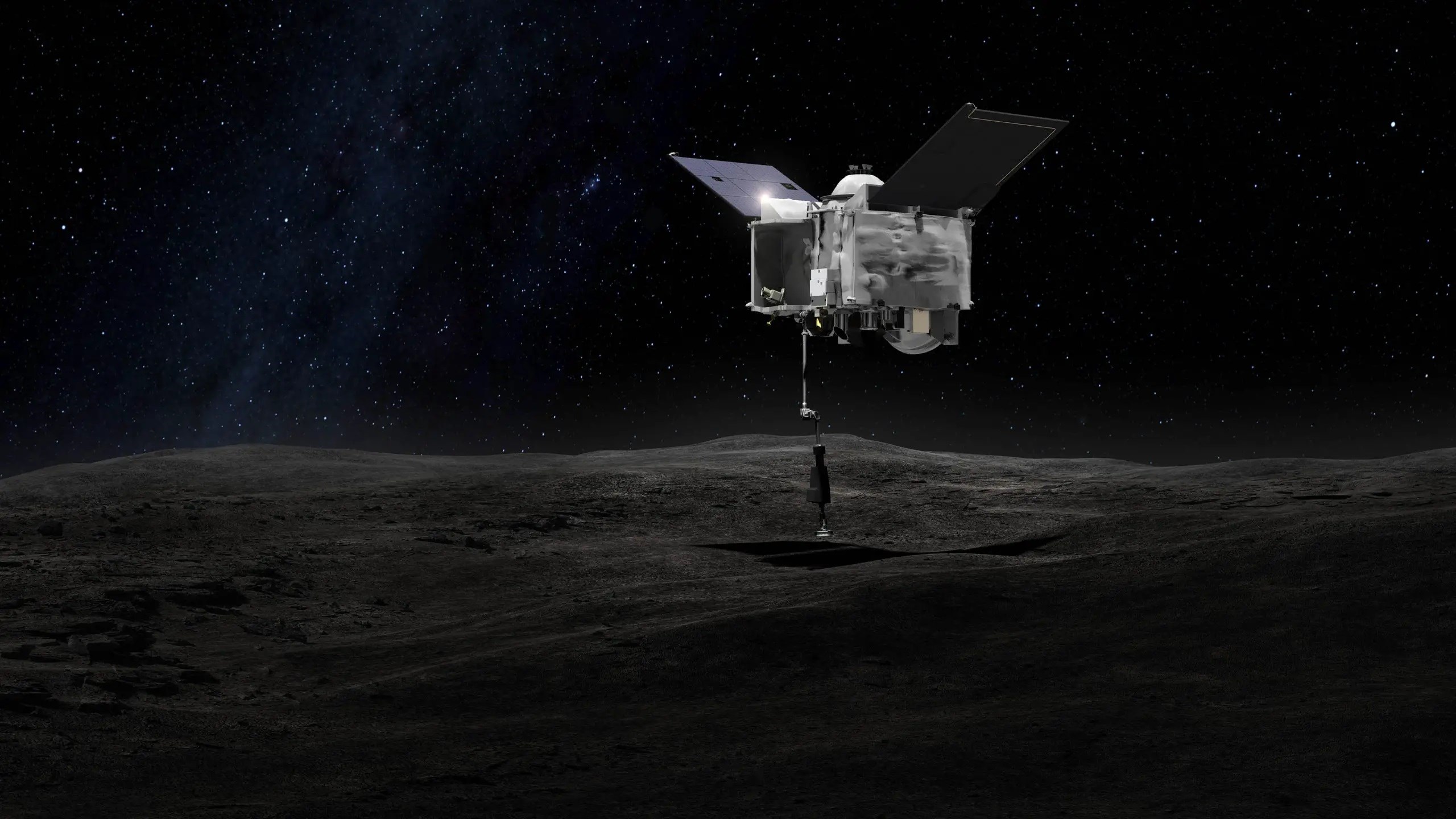 The first samples taken by NASA from an asteroid in the depths of space were safely brought down to Earth, marking a historical first for the scientific world. In the morning operation at the US Army’s Dugway Proving Ground in the arid Utah desert, NASA and US Air Force teams successfully landed a space capsule containing samples of the Bennu asteroid taken by the agency’s OSIRIS-REx spacecraft in 2020.
The first samples taken by NASA from an asteroid in the depths of space were safely brought down to Earth, marking a historical first for the scientific world. In the morning operation at the US Army’s Dugway Proving Ground in the arid Utah desert, NASA and US Air Force teams successfully landed a space capsule containing samples of the Bennu asteroid taken by the agency’s OSIRIS-REx spacecraft in 2020.historical success
The OSIRIS-REx probe, on its journey home after traveling more than 6.2 billion kilometers to reach Bennu, released its samples this morning while it was approximately 101,000 kilometers above Earth. The capsule contains 250 grams of rock fragments and other materials from Bennu that could help answer some of scientists’ most burning questions about the origins of life on Earth and the early days of the Solar System.
NASA broadcast the capsule’s landing live to millions. The agency described the capsule’s landing as “Landing for science! For the first time in history, we brought home beautiful things from this type of object. “We can all breathe a sigh of relief now.” he announced with his statements.
The OSIRIS-REx capsule reached a speed of 43,450 km/h and as it descended through the Earth’s atmosphere, its heat shield was exposed to temperatures as high as 2,900 degrees. The capsule deployed its main parachute at about 20,000 feet, four times higher than expected, but the descent went smoothly. After landing, the capsule and its surroundings were inspected to ensure that it was safe for OSIRIS-REx team members and recovery personnel to approach and inspect the capsule. In the first examination by the rescue teams, it was determined that the capsule was intact and did not receive any damage during landing.
What will happen now?
 From there, the capsule will be attached to a helicopter via a long line and transported to a temporary isolated chamber set up at the U.S. Army’s Dugway Proving Ground. Once secured within the facility, the capsule will be opened on Tuesday, September 26 at the earliest, and the box containing the valuable sample of the Bennu asteroid will be prepared for transport once again. The asteroid material will then be loaded onto a plane and flown to NASA’s Johnson Space Center (JSC), where a newly constructed facility by the agency’s Astromaterial Research and Exploration Science (ARES) division will be waiting for it.
From there, the capsule will be attached to a helicopter via a long line and transported to a temporary isolated chamber set up at the U.S. Army’s Dugway Proving Ground. Once secured within the facility, the capsule will be opened on Tuesday, September 26 at the earliest, and the box containing the valuable sample of the Bennu asteroid will be prepared for transport once again. The asteroid material will then be loaded onto a plane and flown to NASA’s Johnson Space Center (JSC), where a newly constructed facility by the agency’s Astromaterial Research and Exploration Science (ARES) division will be waiting for it.From there, the sample will be shared among different scientific institutions and world space agencies. NASA will keep 70 percent of the sample at JSC and analyze it there for years. The other 25 percent will be shared among more than 200 scientists at 35 different facilities. 4 percent will be given to the Canadian Space Agency and 0.5 percent to the Japan Aerospace Exploration Agency (JAXA).
While OSIRIS-REx is NASA’s first vehicle to collect an asteroid sample, JAXA (Japan Aerospace Exploration Agency) has two such missions. JAXA’s Hayabusa 1 collected material from asteroid Itokawa and sent it back in 2010, while Hayabusa 2 took samples from asteroid Ryugu in 2020. The $1 billion OSIRIS-REx mission launched in 2016, reached Bennu in 2018, and collected samples from the asteroid in 2020.